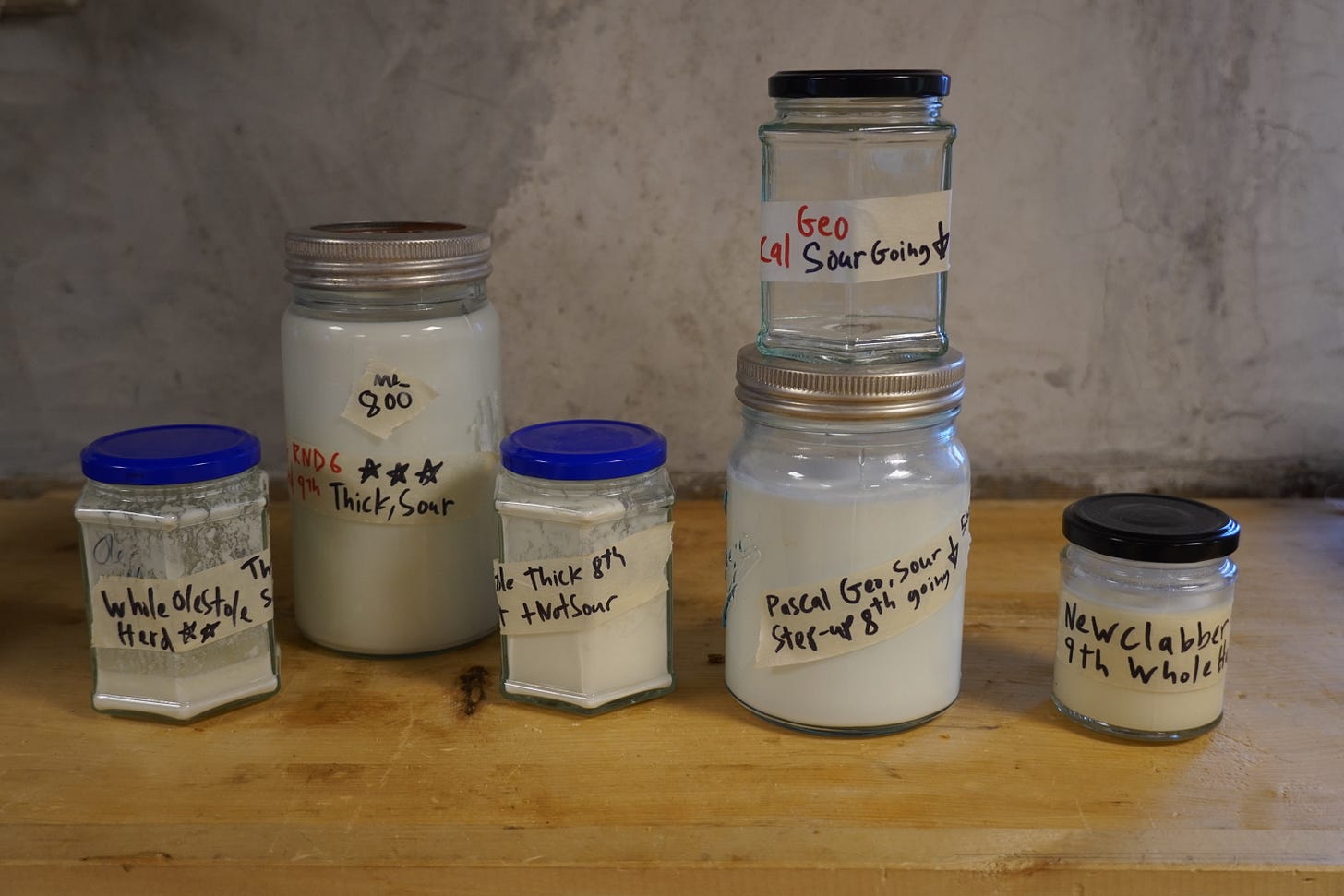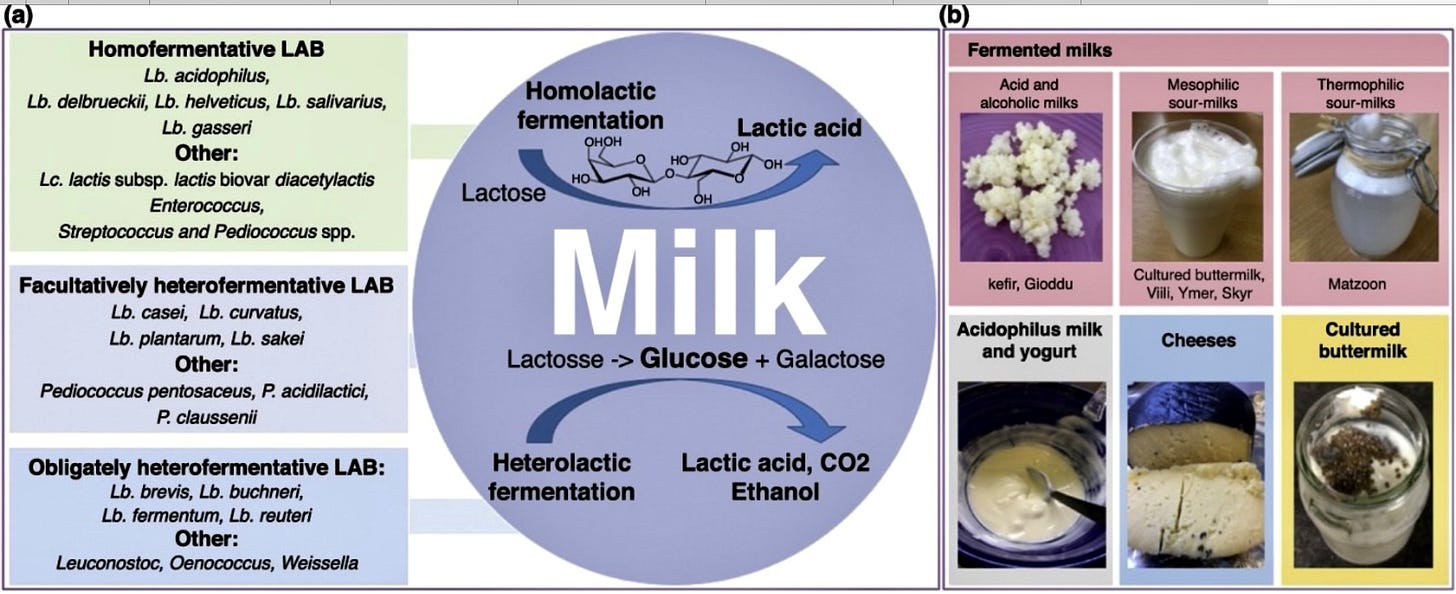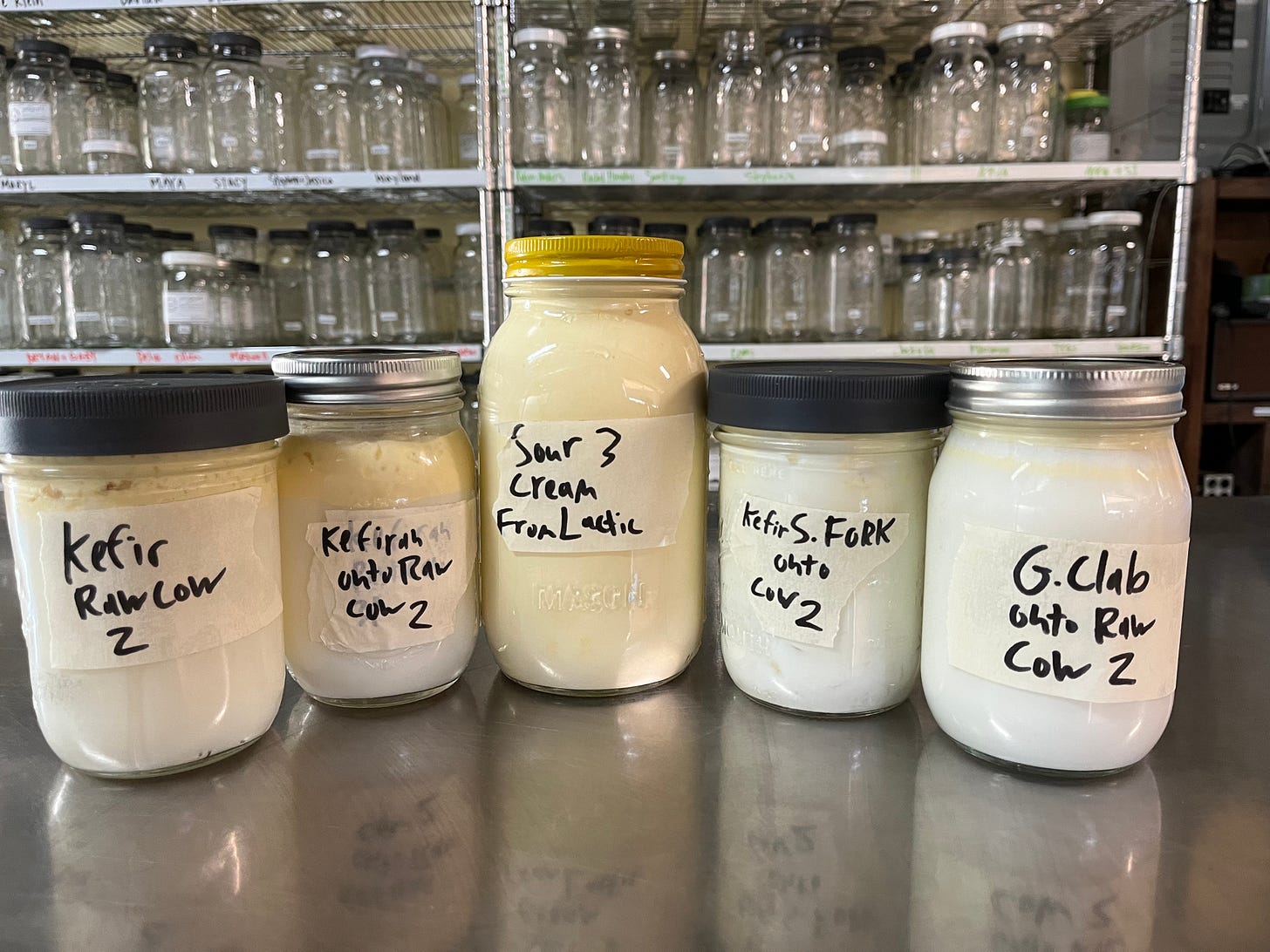The seeds of cheese: milk microbes and heirloom starters.
How we can practice microbial sovereignty in our fermentation, backing our techniques with traditional wisdom and published science.
This is part 3 of a series, following The Seed Mother and The Monsanto Analogy. In this piece, I offer thoughts on what seed saving could look like in regards to cheese, and how maintaining an heirloom starter can be an enactment of microbial sovereignty.

Milk contains communities of bacteria, some of which will ferment milk sugars into lactic acid, causing the milk to sour. For the vast majority of the time in which humans have been fermenting milk, we’ve been working with these indigenous Lactic Acid Bacteria (LAB), sometimes cultivating them in various ways. This was likely unintentional at first, the bacteria would be living on the bodies of animals, in barns, on equipment, and in the spaces where milk is processed and cheese made on a daily basis. Whey from one batch of cheese could also be added to the next. Sour milk or yogurt can be used to maintain a seed store. No-till (raw) milk can be planted with these saved seeds, no purchase necessary.

These practices still exist, in refuges where the industrial paradigm hasn’t been adopted, or where newer practitioners are exploring more probiotic approaches to milk fermentation. This relates to wild fermentation and natural winemaking, but with important differences. True spontaneously fermented cheeses, those with no added starter, can result in amazing flavors but tend to be hard to predict and prone to failure. Wild isn’t really what I and many other natural cheesemakers are going for, and I have problems with the term. The LAB indigenous to milk can be cultivated through a spontaneous ferment that is replicated, forming a culture. Are the cultivated bacteria “wild” or “domesticated”? I want to explore the kind of in between, the symbiosis, and challenge the simplicity of both terms. Maybe it’s more of a wild-tending kind of arrangement. (For more on this complexity and the images below, read This piece from my time in Austria in 22)

Rather than plow and plant patented seeds, I encourage cheesemakers to exercise microbial sovereignty, and cultivate a starter derived from the microbiota of the milk they use to make cheese, or from any milk which is felt to have a strong microbial diversity. Even if you feel the need to pasteurize, an heirloom culture (defined below) can still be used. There are multiple ways to do this. The method I prefer and teach in my workshops is to start by allowing milk to sour spontaneously under the action of native LAB. In souring the milk, LAB are causing a selective pressure to favor their own kind, as they are happy in an acidic environment that inhibits most microbes. You end up with thriving populations of LAB, that can be maintained as an heirloom culture called clabber. If this culture is added to fresh milk, these desirable members of the original milk microbiota grow rapidly, and help ferment milk and cheese in a predictable manner.
Keep reading with a 7-day free trial
Subscribe to Milk Trekker to keep reading this post and get 7 days of free access to the full post archives.




